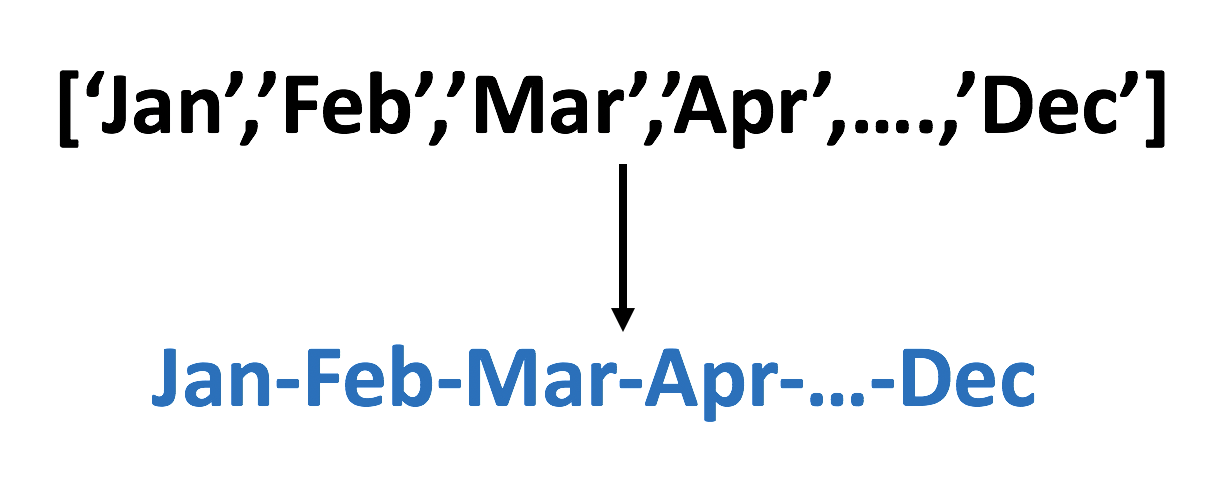Kodeclik Blog
Print a Python List (5 ways)
Let us assume I have a list comprising the 12 months as follows:
months = ['Jan','Feb','Mar','Apr','May','Jun',
'Jul','Aug','Sep','Oct','Nov','Dec']Assume our goal is to print this list. How do we do it? Learn about 5 different ways!
Method 1: Use a vanilla print
You can simply do
print(months)which will produce the output
['Jan', 'Feb', 'Mar', 'Apr', 'May', 'Jun',
'Jul', 'Aug', 'Sep', 'Oct', 'Nov', 'Dec']Now, notice that by default printing a list will yield the square brackets. If you do not desire the square brackets you should explore one of the methods below.
Method 2: Use a for loop
We can create a for loop to run through the indices of the list. We can setup the extent of the for loop using the range operator applied on the list length, as follows:
for x in range(len(months)):
print(months[x])This will produce the output:
Jan
Feb
Mar
Apr
May
Jun
Jul
Aug
Sep
Oct
Nov
DecMethod 3: Use an iterator
Of course, because Python has first class iterators you can write much cleaner code as follows:
for x in months:
print(x)Note that in the above code, x refers to the actual elements of the list, like ‘Jan’, ‘Feb’, and so on. In the previous program, x referred to indices such as 0, 1, and so on.
The output is still the same:
Jan
Feb
Mar
Apr
May
Jun
Jul
Aug
Sep
Oct
Nov
DecMethod 4: Use a join function
The join function takes the elements of a list and concatenates them using a specified separator.
If we do:
print (','.join(months))We are using the comma symbol as a separator. So this line will print:
Jan,Feb,Mar,Apr,May,Jun,Jul,Aug,Sep,Oct,Nov,DecTo obtain the same output as before, you can do:
print ('\\n'.join(months))This will yield:
Jan
Feb
Mar
Apr
May
Jun
Jul
Aug
Sep
Oct
Nov
DecOf course, you can do both:
print (',\\n'.join(months))This will produce:
Jan,
Feb,
Mar,
Apr,
May,
Jun,
Jul,
Aug,
Sep,
Oct,
Nov,
DecMethod 5: Use the * symbol

Prefixing the list with an asterisk and printing it is another way. Let us see what that does and how it differs from vanilla printing (our Method 1 presented earlier). Consider the following code:
print(months)
print(*months)The output is:
['Jan', 'Feb', 'Mar', 'Apr', 'May', 'Jun',
'Jul', 'Aug', 'Sep', 'Oct', 'Nov', 'Dec']
Jan Feb Mar Apr May Jun Jul Aug Sep Oct Nov DecNote that in the vanilla printing approach, you get the square brackets and commas separating the values. Using the * symbol we do not have these decorations.
You can also give separators, like so:
print(*months, sep='-')The output is:
Jan-Feb-Mar-Apr-May-Jun-Jul-Aug-Sep-Oct-Nov-DecThere you have it - 5 different ways to print a Python list! Which one is your favorite?
If you liked learning about printing lists, checkout our blog post on Python print() and also four different ways to
prepend items to a list.
Interested in more things Python? See our blogpost on Python's enumerate() capability. Also if you like Python+math content, see our blogpost on Magic Squares. Finally, master the Python print function!
Want to learn Python with us? Sign up for 1:1 or small group classes.